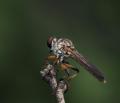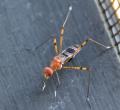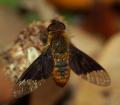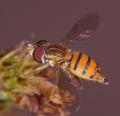Diptera.info :: Identification queries :: Diptera (adults)
Who is here? 1 guest(s)
|
Very Unusual Robber Fly
|
|
| Stephen |
Posted on 20-09-2006 10:21
|
|
Member Location: West Virginia USA Posts: 1322 Joined: 12.04.05 |
Very unusual Robber Fly. I do have the family right, don't I? The abdomen reminds me of Tabanidae and other parts remind me of Rhagionidae. I couldn't find any Asilidae pictures that looked right, but surely it is Asilidae. So, ID help would be appreciated! The fly rested on a towel that was hanging on a chair outside. Our cat Dave was in the chair, and finally Dave reached up and gave the towel a pull, for no apparent reason, and off the fly went. At least I was able to photograph the fly from several angles first. Open area near woodlands, 10 September 2006, West Virginia USA. Stephen attached the following image: 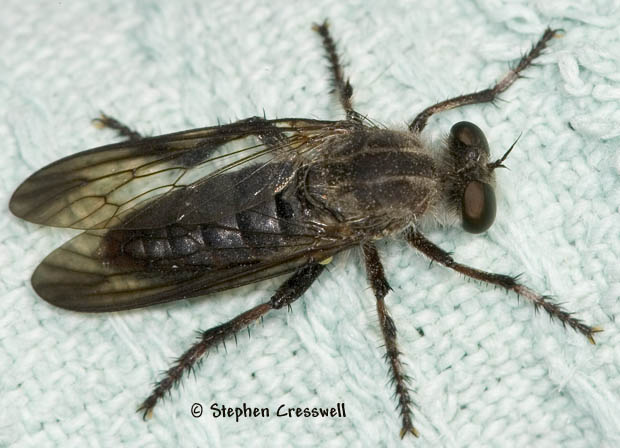 [74.24Kb] --Stephen Stephen Cresswell www.americaninsects.net |
| Stephen |
Posted on 20-09-2006 10:23
|
|
Member Location: West Virginia USA Posts: 1322 Joined: 12.04.05 |
Second image.
Stephen attached the following image:  [52.02Kb] --Stephen Stephen Cresswell www.americaninsects.net |
| Stephen |
Posted on 20-09-2006 10:26
|
|
Member Location: West Virginia USA Posts: 1322 Joined: 12.04.05 |
The lateral view.
Stephen attached the following image: 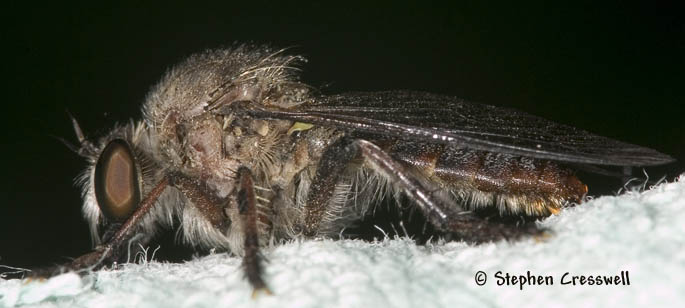 [53.32Kb] --Stephen Stephen Cresswell www.americaninsects.net |
| Eric Fisher |
Posted on 20-09-2006 14:40
|
|
Member Location: California Posts: 435 Joined: 19.05.06 |
Hi Stephen, This is Heteropogon macerinus (a male - as it has the 'signal hair patch' on the midtibia). This genus is small in the e. US, much bigger in the w. US & Europe. Eric. |
|
|
|
| Stephen |
Posted on 20-09-2006 17:20
|
|
Member Location: West Virginia USA Posts: 1322 Joined: 12.04.05 |
Thanks very much, Eric! I went through all 43 pages of Asilid photos on BugGuide this morning. There are four Heteropogon photos there but I suppose I passed them by because three had banded abdomens and the other had a brown color scheme. Once again I am misled by color and markings, I should pay more attention to structure, but that takes a more educated eye! Thanks again for your help.
Edited by Stephen on 20-09-2006 23:27 --Stephen Stephen Cresswell www.americaninsects.net |
| Jump to Forum: |



